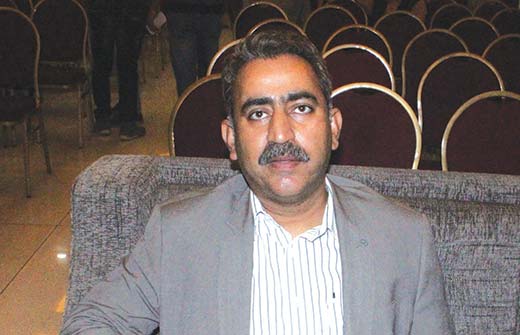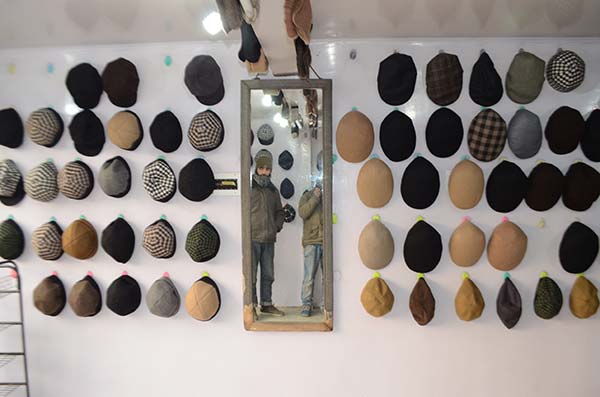Minutes after his Kashmir conflict and Muslims of Jammu was formally released last week, journalist Zafar Choudhary spoke to Durdana Bhat about the state and status and the controversies involving Muslims living on the other side of Pir Panchal

Kashmir Life (KL): Why are Jammu Muslims again in the news?
Zafar Choudhary (ZC): The issue is that the result of the last assembly elections consolidated the regional powers. Muslims have never been an inclusive part of regional power in Jammu. That is why, power has consolidated the BJP sentiment and Muslims are completely excluded out of that. There is a Kashmiri sentiment, which PDP is consolidating and there is a pro-BJP sentiment, which BJP is consolidating in Jammu. But there is sizeable population of Muslims who are feeling out of this completely. That is something structural as BJP has come to power for the first time ever, there is pressure on them as well. They are making certain policy changes and adjustments in the administration which is not very kind to the Muslims in the region.
KL: Is it a fact that some of the officers are been shunted out of Jammu?
ZC: I think there is some realignment within the administration. If someone has become a legislature after his life long struggle, he would certainly want some people close to him posted at certain places. So whenever a new government takes places, such realignment in the administration takes place. But this has to be checked and if it continues then it is not a good phenomenon.
KL: How do you see the discrimination of the Jammu Muslims in wake of what is happening in the historic context?
ZC: Basically, the Muslims of Jammu, particularly in the post 1940’s environment – when there was a clash of personalities between the leaders between Muslim Conference and the National Conference, couldn’t integrate into the larger narrative of Kashmir’s over all politics. Then there was the division of the region. So they got divided and deprived of their leaderships. And then in Jammu it became a very strong anti-sentiment which was spitted largely against Kashmir valley. On the other end, the Jammu Muslims being Muslims were seen as the part of larger political sentiment of Kashmir valley. While this all was happening, the (Kashmir) leadership over a long period of time didn’t own them and in Jammu they were seen as part of that sentiment. So they remained in isolation.
KL: How can we see it discrimination if nobody from Jammu (Muslim) becomes a president of a union when they lack enough numbers to be there, an issue that a reviewer of your book just raised?
ZC: I haven’t said anywhere that there is discrimination. What I presented in my statement is that there is not good inclusion of Muslims in the overall social and economic life of Jammu province. They are excluded from that. So they do not have enough members to stake claim at any of the influential bodies. And that explains the overall social and economic profile, which needs to be looked into. So there is no systematic discrimination and there are no legislations which deprived them of doing something good. There is no organized campaign against them.
KL: In Jammu, is demographic shift still taking place?
ZC: We have to understand this in the context of urbanization, people from villages, rural areas are coming to the towns for better education of their children. Given the history of this place, Muslims would like to settle down in the Muslim localities. There has been illegal encroachment of the forest areas. But if you go whole hog about that there is some suspicion and fears among the community that needs to be addressed. So ghettoization is a phenomenon over a period of time in terms of security, people get into groups.
KL: But there are lot many localities which earlier didn’t exited. And people living there are not state subjects like Qasimnagar and Gorkha Nagar?
ZC: No, it is not on enormous scale. Like in 1947, the population of Muslims in Jammu district was forty percent that came down to five percent. Today, again there is an up surge in the Muslim population in Jammu district from Rajouri, Poonch, Kisthwar, Doda they are coming to settle down in Jammu. So shifts are taking place in that direction as well.
Qasim Nagar is divided into two parts, one is below the road and one is above the road. If we look at the situation above the road there are few thousand emigrants from Mayanmar and they are in different parts of India. They have their valid UNCHR cards; they are neither state subjects nor citizens of the Indian state. And similarly there are people on the other side of the road who are Indian citizens but not state subjects of Jammu and Kashmir. The problem is if you deal with one community, what you do with the other community on the other side of road.
KL: How strong is the feeling that to end some sort of discrimination in planning, development, execution and implementation of the projects, there has to be something that will help Chenab region or Pir Panchal region to grow on its own because it is ethno-culturally different?
ZC: The way out is, more involvement of local political leadership in the decision making process.















